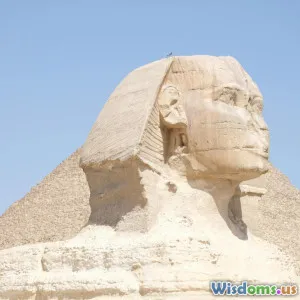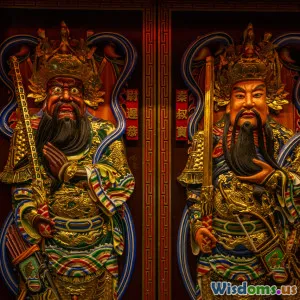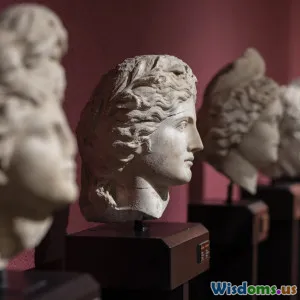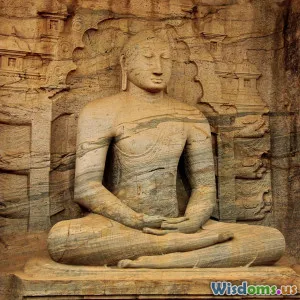
Behind the Sphinx The Lost Art of Riddles in Ancient Egypt
8 min read Explore the mysterious role of riddles and the Sphinx in Ancient Egypt's culture and lore. (0 Reviews)
Behind the Sphinx: The Lost Art of Riddles in Ancient Egypt
Introduction
In the pantheon of ancient symbols, the Great Sphinx of Giza stands as an enduring enigma, transcending time and geography. With the body of a lion and the head of a human—often believed to be Pharaoh Khafre—the Sphinx is more than monumental stone; it encapsulates layers of myth, wisdom, and cultural codices. But buried deep beneath the granite facade lies a lesser-known facet of Ancient Egyptian heritage: the lost art of riddles. Across ancient texts and oral traditions, riddles served as intellectual exercises, paradoxical wisdom, and encoded knowledge vital for priests, scribes, and kings alike. This article delves into the fascinating world behind the Sphinx, revealing how riddles shaped Egyptian mythology, spiritual life, and societal identity.
The Cultural Context of Riddles in Ancient Egypt
Riddles have historically functioned as tools for teaching, initiation, and entertainment. In Ancient Egypt, a civilization whose awe-inspiring monuments sprang from a complex interplay of religion, mythology, and cosmology, riddles were woven tightly into this tapestry.
Riddles as Vehicles of Esoteric Wisdom
For the priesthood, Egypt’s spiritual elite, riddles were a means of transmitting sacred knowledge. Written on papyri and inscribed in hieroglyphics, they were intellectually crafted puzzles that engaged not merely the surface meaning of words but their hidden dimensions. One famous example is the "Hymn to the Sphinx" – an ancient composition that both praises the creature and veils profound cosmological truths within metaphor and allegory.
Public and Royal Use
Rulers used riddles to demonstrate intellectual prowess and divine wisdom. Pharaohs were often depicted as wise judges whose ability to decipher or pose riddles reflected their fitness to govern mysterious cosmic forces. Meanwhile, literate Egyptians, including scribes and scholars, relished riddles during communal gatherings and in educational settings to refine their understanding of language and theology.
The Sphinx: Mythic Guardian and Riddler
The Sphinx’s origin predates Greek mythology, and contrary to the familiar Greek lore of the riddle-posing creature near Thebes, the Egyptian Sphinx assumed a unique role.
Symbolism Embodied
In Egypt, the lion’s body symbolized strength and protection, while the human head embodied intelligence and royal authority. It embodied dualities: mortal and divine, power and wisdom. This fusion echoed the importance of riddles—complex constructs blending literal and symbolic interpretations.
The Riddle of the Sphinx: Beyond Greek Legend
Greek mythology famously recounts the Sphinx’s riddle: "What walks on four legs in the morning, two at noon, and three in the evening?" Yet this riddle does not stem from Egyptian origins. Instead, the Egyptian Sphinx is more an allegorical figure whose very existence suggested a question posed to humanity: Can you decipher the secrets of the universe?
Some Egyptologists posit that the Sphinx itself served as a cosmic riddle, encouraging viewers to interpret layered meanings of divine creation and human destiny. Its orientation facing the rising sun during the equinox further entwines the Sphinx with riddles about time, life cycles, and rebirth.
Examples of Ancient Egyptian Riddles and Their Functions
Though fewer records survive compared to other cultures, several riddle-like formulations appear in textual and archaeological sources.
Papyrus Chester Beatty and the Westcar Papyrus
Several riddles and enigmatic stories are contained within these manuscripts dating to the Middle Kingdom. For instance, dialogues between kings and magicians often incorporated cryptic expressions, requiring careful thought to unravel hidden meanings.
The Teachings of Amenemope
This wisdom text includes aphorisms structured like verbal riddles, designed to provoke reflection on ethics and social conduct. These show how riddles extended beyond mere puzzles into moral guidance.
Riddles in Funerary Texts
The Book of the Dead contains enigmatic phrases and symbolic images interpreted as metaphysical riddles aimed to assist the deceased in navigating the afterlife's perilous challenges. Understanding these “riddles” was crucial for survival beyond death.
The Lost Tradition: What Happened to Egyptian Riddles?
Several factors contributed to the fading of riddling traditions in Egypt:
-
Hellenistic Influence: After Alexander the Great’s conquest, Greek culture and philosophy entwined with Egyptian culture, often overshadowing indigenous expressions.
-
Religious Shifts: The rise of monotheistic religions during the late periods imposed different modes of sacred knowledge dissemination, emphasizing dogma over cryptic knowledge.
-
Decay of Hieroglyphic Literacy: As demotic and later Coptic scripts supplanted hieroglyphs, the transmission of riddle-laden symbolic language decreased.
Despite their decline, their legacy influences how we interpret ancient Egyptian art, artifacts, and cultural myths today.
Modern Implications and Fascination
Today, enthusiasts and scholars alike continue to explore riddles within Egyptian mythology to:
-
Understand the intellectual life of Ancient Egypt beyond monumental architecture.
-
Decode symbolic art, gaining insights into Egyptian cosmology and worldview.
-
Cross-analyze with global traditions highlighting shared human fascination with mystery and wisdom.
Additionally, film, literature, and games often resurrect the motif of riddles associated with the Sphinx, igniting contemporary imaginations.
Conclusion
Exploring the lost art of riddles in Ancient Egypt reveals a civilization deeply invested in intellectual complexity, symbolic language, and spiritual insight. The Sphinx, emblematic of this heritage, is not just a silent statue but a monumental question bridging the human to the divine. Through puzzles veiled in poetic language and mythological symbolism, ancient Egyptians taught that wisdom comes from deciphering the invisible layers of reality. Rediscovering this tradition invites modern readers to appreciate riddles not only as ancient entertainments but as profound legacies that continue to inspire curiosity and reflection today.
Rate the Post
User Reviews
Other posts in Cultural Studies
Popular Posts















